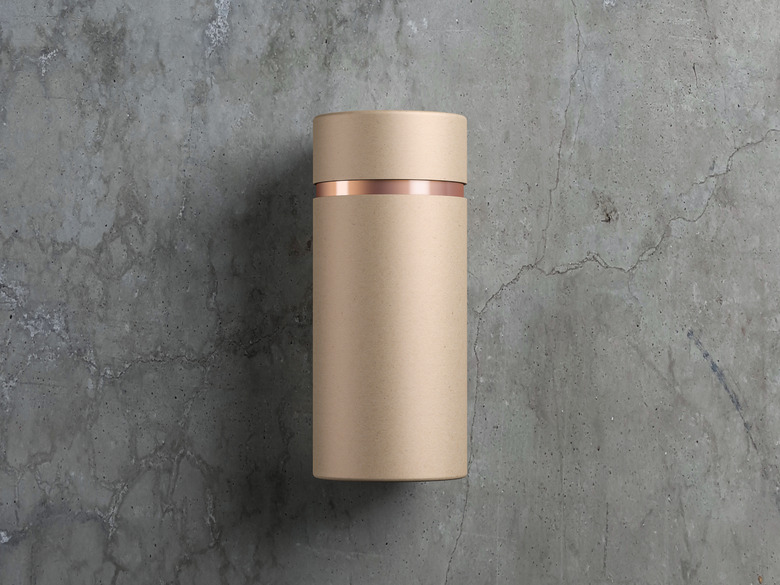How To Calculate The Capacity Of A Cylinder
Whether it's a water tank, a paint can or a test tube, every cylindrical container has two characteristics in common. It has a circular cross-section and a particular extension in space, called its length or height. If you want to know the capacity of the cylinder, which is how much it holds, you're basically calculating its volume. There's a simple formula for that, but there's a catch. You also have to take into account the thickness of the container walls. In most cases, this quantity is negligible, but not always. One more thing: Capacity is usually measured in gallons or liters, so if you want those units, you'll have to convert from cubic feet, inches or metric units.
TL;DR (Too Long; Didn't Read)
Since capacity is different from outside volume, you need to measure the inside dimensions if the cylinder has thick walls.
Volume and Capacity
Volume and Capacity
The words "volume" and "capacity" are often used interchangeably, but they mean different things. The volume of a cylinder equals the amount of space it occupies, and you could measure it by immersing it in water and measuring the amount of water displaced. The capacity, on the other hand, refers to the amount of liquid or solid matter the cylinder can hold. If you have a cylinder with thick walls, its capacity could be significantly different than its volume.
Calculating Volume of a Cylinder
Calculating Volume of a Cylinder
The formula for calculating the volume of a cylinder with radius r and height h is:
\(V = \pi r^2 h\)
In practice, it's difficult to measure radius, because to do it, you have to pinpoint the center of the mouth of the cylinder. It's much easier to measure diameter, which is the maximum distance between the walls. Since the radius equals half of the diameter (d = 2r), the volume formula in terms of diameter becomes:
\(V = \pi (d/2)^2 h = \frac{\pi d^2 h}{4}\)
If the walls are negligibly thin, the volume equals capacity, but if the walls are thick, capacity is smaller than volume. To ensure you're calculating capacity, and not volume, you should measure the inside radius of the cylinder, and you should measure the length from the inside bottom to the mouth of the cylinder.
Converting to Gallons or Liters
Converting to Gallons or Liters
If you make your measurements in inches, your result will be in cubic inches. Similarly, measure in feet and you get capacity in cubic feet, or measure in centimeters or meters and you get the result in cubic centimeters or cubic meters respectively. In all cases, you'll need a conversion factor to express the result in gallons or liters:
- 1 cubic inch = 0.004329 U.S. gallons
- 1 cubic inch = 0.000579 cubic feet
- 1 cubic foot = 7.4813 U.S. gallons
- 1 cubic centimeter (1 milliliter) = 0.000264 U.S. gallons
- 1 cubic meter = 264 U.S. gallons
- 1 liter = 0.264201 U.S. gallons; 1 U.S. gallon = 3.79 liters
- 1 imperial gallon = 1.2 U.S. gallons; 1 U.S. gallon = 0.832701 imperial gallons
Example
Example
**A cylindrical concrete water tank has 3-inch walls and a 3-inch base. Its outside measurements are: diameter = 8 feet; height = 5 feet. What is its capacity?**
The walls of this cylinder are not negligibly thin, so you need the inside measurements. Since you know the wall thickness, you can calculate them. Subtract twice the wall thickness (6 inches) from the given external diameter to get the inside diameter (8 feet = 96 inches; 96 – 6 = 90 inches inside diameter). To get the inside height, you need to subtract the thickness of the bottom (3 inches) from the given height (5 feet = 60 inches; 60 – 3 = 57 inches inside height).
Using the formula, you get:
\(V = \frac{\pi\times (90)^2 \times 57}{4} = 362,618.33\text{ in}^3\)
V = 362,618.33 cubic inches, or 209.74 cubic feet, 1,569.77 U.S. gallons, 1,307.15 imperial gallons or 5,949.43 liters.
Cite This Article
MLA
Deziel, Chris. "How To Calculate The Capacity Of A Cylinder" sciencing.com, https://www.sciencing.com/calculate-capacity-cylinder-4868412/. 5 December 2020.
APA
Deziel, Chris. (2020, December 5). How To Calculate The Capacity Of A Cylinder. sciencing.com. Retrieved from https://www.sciencing.com/calculate-capacity-cylinder-4868412/
Chicago
Deziel, Chris. How To Calculate The Capacity Of A Cylinder last modified March 24, 2022. https://www.sciencing.com/calculate-capacity-cylinder-4868412/
